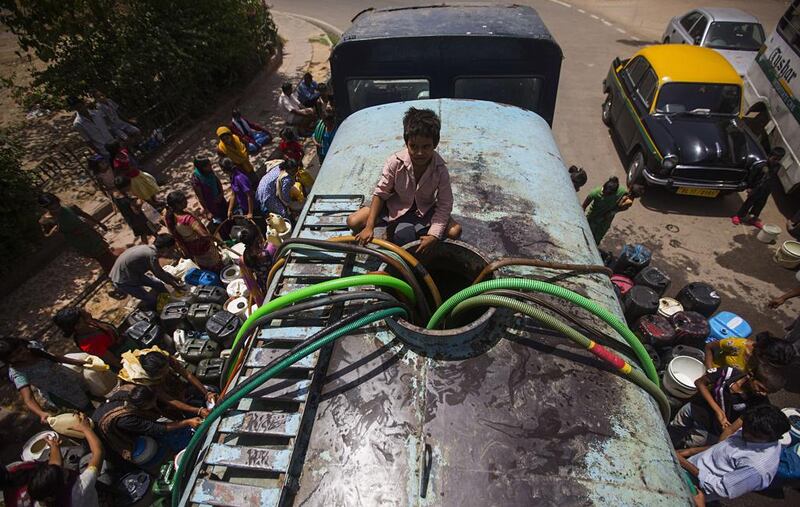Food insecurity, migration, water stress and recession are some of the impacts associated with climate change. It is also increasingly being recognised as a trigger of violent conflict around the world, as evident in the conflict-straddled neighbourhood of South Asia.
Boasting a transnational drainage system, the Tibetan plateau is the main source of water for the region. It is also the origin of the region’s major rivers – Indus, Ganges, Yangtze, Mekong and Brahmaputra – catering to 40 per cent of the world’s population. In fact, shared water lies at the heart of the region’s fault lines.
The conflict most symbolising this phenomenon is the Kashmir dispute. Premised on the right of self-determination of the Kashmiri people, it also overlaps with Pakistan’s pursuit of water security. With most of its major rivers flowing from Kashmir, the part under Indian control, the issue has always been of intrinsic importance. Kashmir-originating rivers continue to form Pakistan’s main source of irrigation driving its economy. Over time, the issue has acquired greater national security significance.
Of late, the construction of dams by India over rivers flowing into Pakistan from Kashmir has added to the tensions. Moreover, erratic rainfall and flash floods induced by melting glaciers have wreaked havoc in Pakistan. Coinciding with India’s dams construction, which once completed will allow it greater leverage over the water flowing into Pakistan, popular perception identifies India as the miscreant behind recent problems.
In fact, the glaciers have a greater impact on Indo-Pak relations. They are melting at an alarming rate and Siachin Glacier is disappearing faster than any other. It feeds into the Indus, the central artery of Pakistan’s river system. French geologists have already warned that the Indus will turn into a seasonal river by 2040, rendering Pakistan’s Punjab province increasingly drought prone.
Growing food and water insecurity along with resource scarcity in a country struggling with instability, paired with the popular belief of a mischief-making neighbour and met with an equally virulent Indian public opinion, could trigger a confrontation over Kashmir and its water resources.
Equally daunting are the dynamics of the China-India matrix, also a product of contested boundaries and shared waters. The main sticking point being the Brahmaputra River flowing from China into India and onwards to Bangladesh. China has undertaken the embankment and diversion of the river along with plans to build various hydropower dams over it. This has unnerved the lower riparian recipients as the river is the main source of water for India’s north-east and Bangladesh.
India also fears an encroachment on the McMahon line by China. Beijing is planning to construct military infrastructure on the Tibetan plateau. The setting up of a permanent military presence was previously unthinkable in the area due to harsh weather conditions. Less extreme conditions have also allowed it to build bunkers in the Aksa-i-chin. China’s plan to widen the strategic Karakoram highway into Pakistan has also rattled India.
Such developments can become a cause of deteriorating bilateral relations, especially if India suffers a major disaster caused by the actions of others. This can also make any border settlement extremely difficult.
Migration into India from Bangladesh has been another contentious issue, between both countries for decades. It has assumed new dimensions as the effects of climate change set in.
With the central cause of migration intensifying – flooding – new dynamics have also come into play. Rising sea-levels are due to submerge most of Bangladesh’s urban coast line.
The damming of rivers upstream by both India and China will also render its river systems dry for six months annually, while intensified flooding along with erratic rainfalls will unfold their own series of consequences.
Settling land aggravated by flood-induced salinity is reducing land productivity, especially rice farming, which is Bangladesh’s main staple. Estimates suggest that 25 per cent of Bangladeshi land as it stood in 1989 will have either disappeared or become uninhabitable by 2100.
With survival at stake, most Bangladeshis will have to make their way into other territories, like Assam in India, a traditional destination.
The influx into the region has led to greater scramble for resources, sparking frequent violence. This has, in turn, led to recurrent communal tensions, that could be exploited by elements such as ISIL or Al Qaeda, with the latter citing widespread violence against Muslim Bengali migrants in 2014 as one of the causes (along with Kashmir) for establishing its off shoot AQIS (Al Qaeda in the Indian Subcontinent).
The issue has further complicated matters for India with it strengthening the appeal for the region’s indigenous secessionist movement. All these matters could come to a head providing for a lethal ignition in the region.
Despite the gravity of the situation, the consequences of climate change are yet to be fully appreciated or addressed by the stakeholders. Living on borrowed time, so to say, the region needs to act and act fast before its inherent conflicts entwined with the depredations of climate change overtake it.
Asma-Khan Lone is an assistant professor at Jindal School of International Affairs in India





